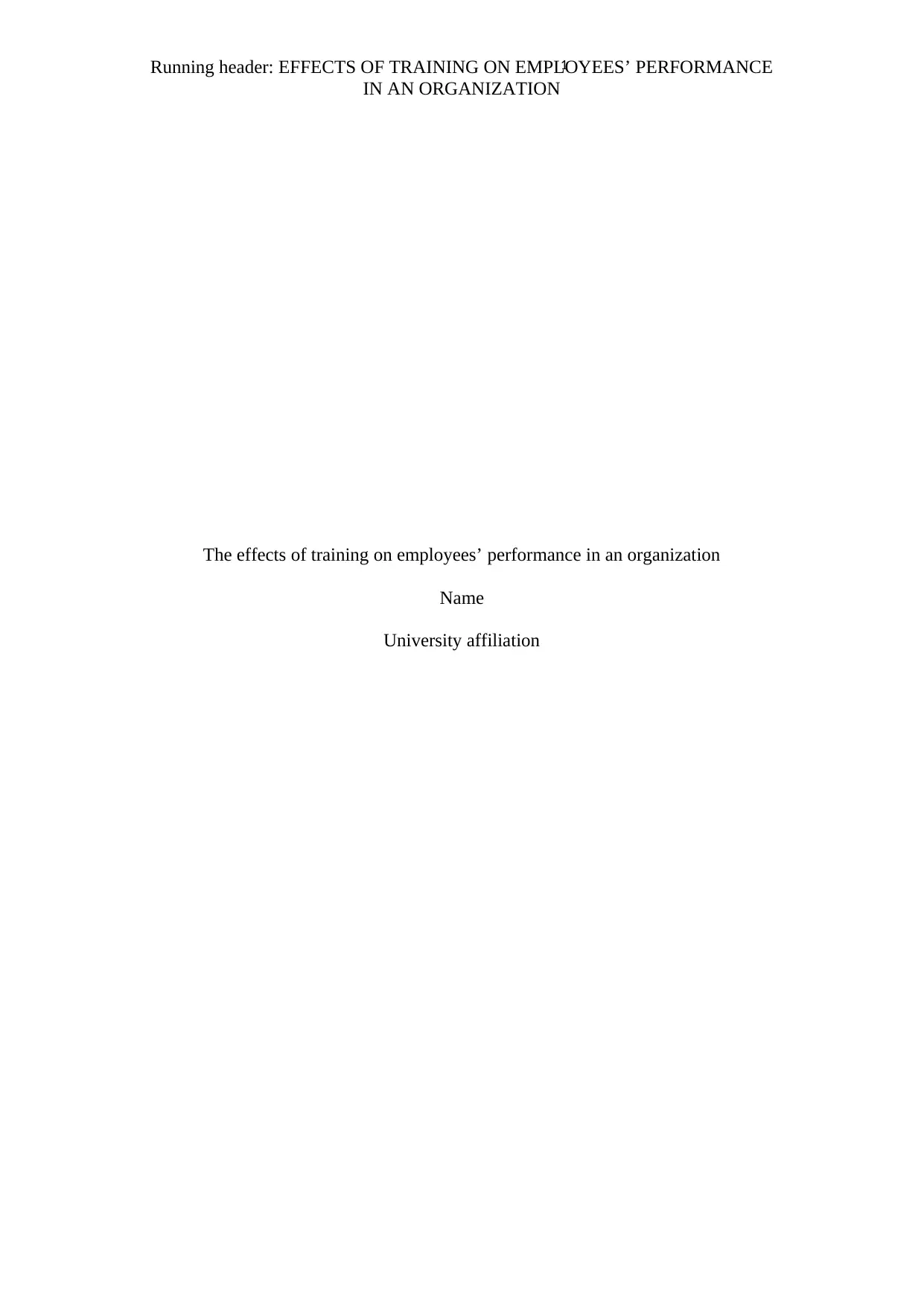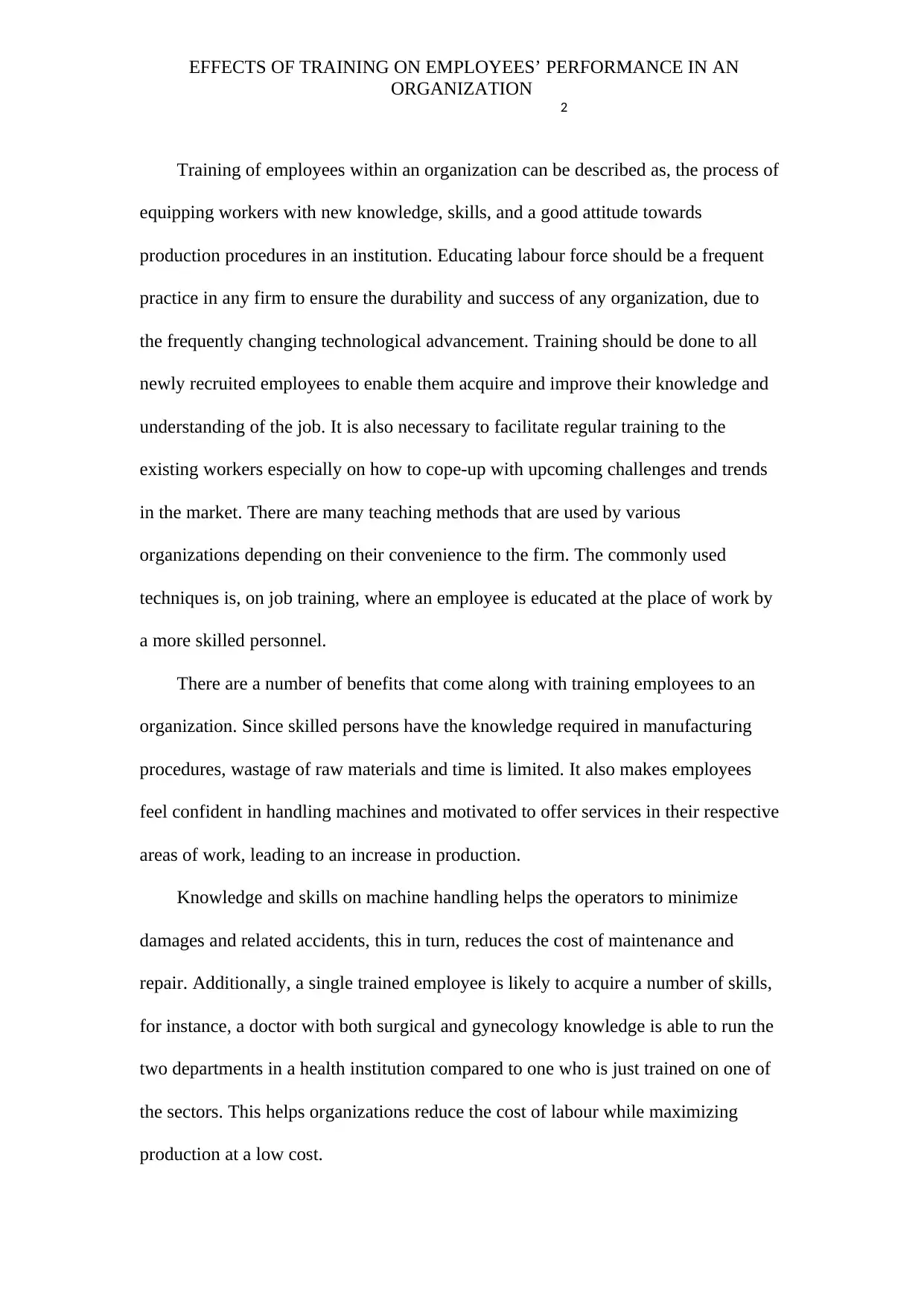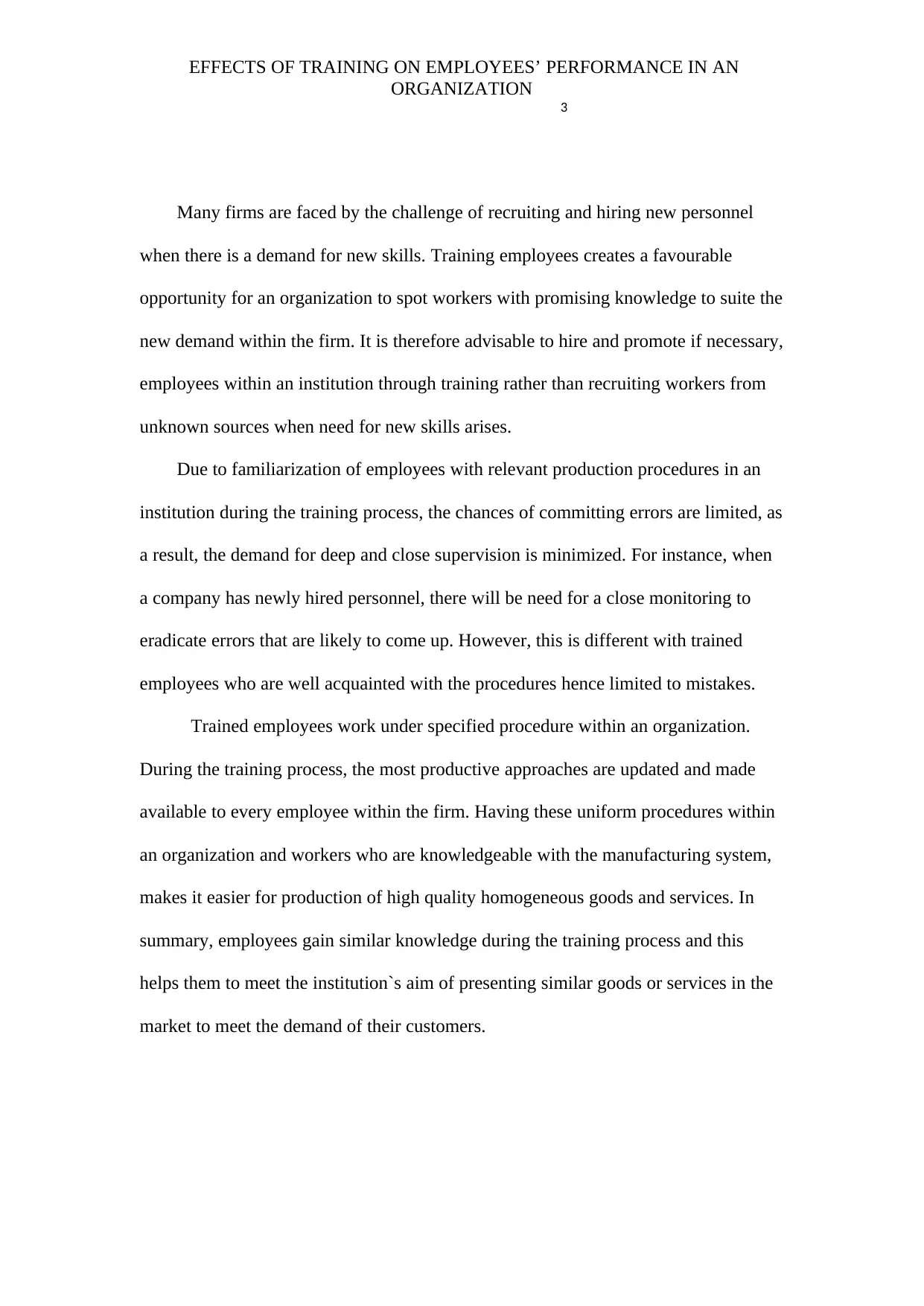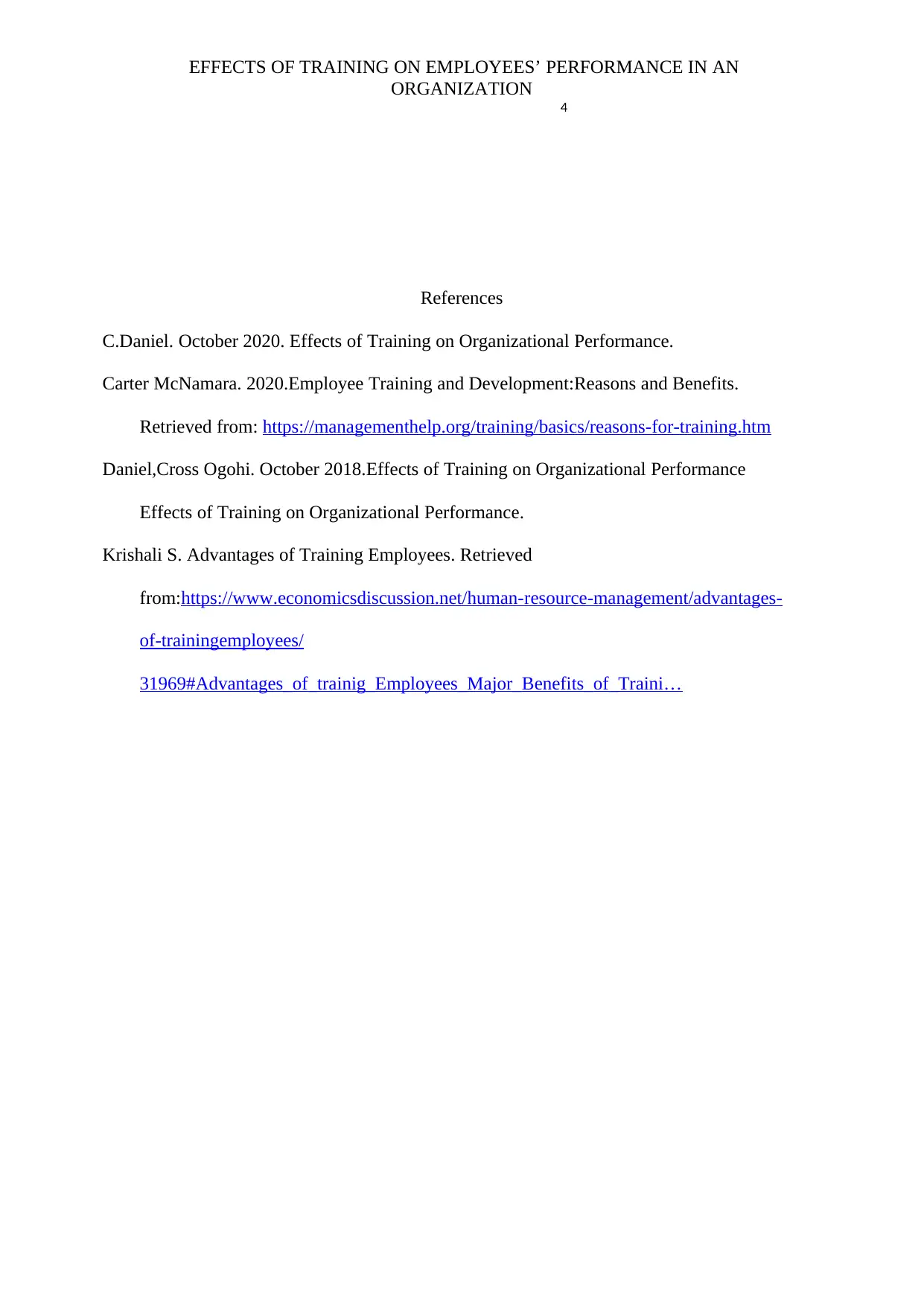Effects of Training on Employees' Performance: A Detailed Analysis
VerifiedAdded on 2021/05/26
|4
|684
|108
Report
AI Summary
This report investigates the effects of employee training on organizational performance. It defines training as equipping workers with new knowledge, skills, and a positive attitude towards production. The report highlights the benefits of training, including reduced material waste, increased employee confidence and motivation, and minimized machine damage. It also discusses how training helps organizations identify skilled employees, reduce hiring costs, and minimize the need for close supervision due to fewer errors. Moreover, the report emphasizes the importance of standardized procedures and the production of high-quality goods and services as a result of training. The author references various sources to support the claims made within the report, reinforcing the significance of employee training for organizational success and sustainability in the face of technological advancements and market changes. The report underscores the importance of continuous training for both new and existing employees to ensure the long-term success of any organization.
1 out of 4











![[object Object]](/_next/static/media/star-bottom.7253800d.svg)